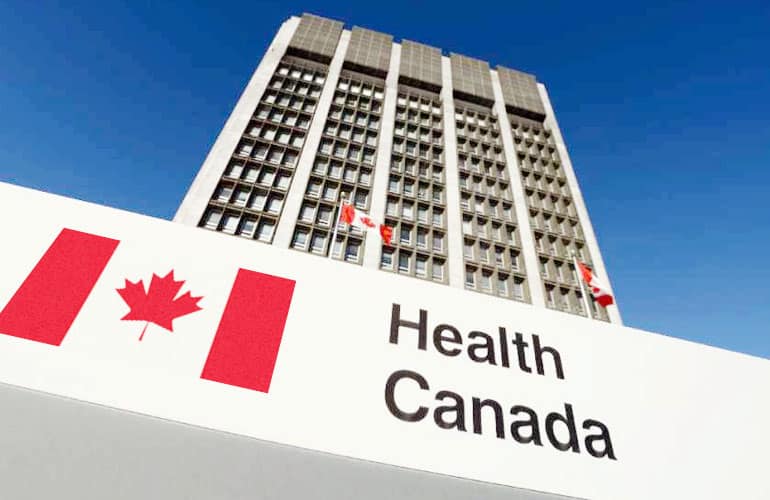The new article describes specific types of changes to medical devices in detail and outlines the critical points related to the regulatory status thereof.

Table of Contents
Health Canada, the country’s regulatory agency in healthcare products, has published a draft guidance document dedicated to interpreting the “significant change” of a medical device.
The document is intended to provide additional clarification regarding the applicable regulatory requirements and recommendations to be considered by medical device manufacturers and other parties involved to ensure compliance with the respective legal framework.
At the same time, provisions of the guidance are non-binding in their legal nature, nor are they intended to introduce new rules or impose new obligations.
The authority also reserves the right to make changes to the guidance, should such changes be reasonably necessary to reflect corresponding amendments to the underlying legislation.
In particular, the document describes in detail various changes to medical devices and provides additional clarifications regarding their regulatory status, highlighting the key aspects to be considered.
Changes to Manufacturing Processes, Facilities, or Equipment
First of all, the authority mentions that modifications to the manufacturing processes, facilities, or equipment can significantly impact the medical device’s safety and effectiveness.
Thus, changes such as altering the component formation process, adjusting manufacturing machine tolerances, replacing manufacturing equipment, or relocating manufacturing facilities must be scrutinized for their potential impact.
The significance of these changes is based on their effect on device specifications, performance, and material properties, with special attention to be paid to alterations that could influence the device’s sterilization process.
Quality Control Procedures
As further explained by the authority, adjustments to the manufacturing quality control procedures are critical to ensuring medical devices’ continued safety and effectiveness.
The relevant section of the guidance describes in detail the regulatory perspective on changing or adding new testing or inspection activities for materials and final products.
The focus is distinguishing between significant and non-significant changes, where modifications that do not compromise the specifications or acceptance criteria are typically considered non-significant.
However, it is explicitly stated that any adjustments that loosen these specifications or criteria signify a notable change, requiring further assessment.
Design Changes
The document also describes the matter related to the design changes, ranging from minor specification adjustments to significant alterations in operating principles. Significant design changes potentially alter the device’s safety and effectiveness, including modifications to the device’s control mechanism, operating principles, design specifications, components, or accessories.
The document emphasizes the necessity of evaluating these changes meticulously, considering their impact on the device’s intended use and overall risk profile.
Sterilization Changes
The respective section of the guidance elaborates on the critical nature of changes to sterilization processes.
Significant changes include modifications that potentially compromise the sterilization effectiveness or introduce new risks to the safety of a sterile device.
Examples are provided by the authority to illustrate changes that necessitate a reevaluation of sterilization validation, such as alterations in the manufacturing environment that increase bioburden or changes to sterilization methods and critical cycle parameters.
Software Changes
As mentioned in the document, software modifications present unique challenges in the regulatory landscape of medical devices.
The document outlines criteria for determining the significance of software changes, focusing on modifications that affect the device’s intended use, introduce or modify risks, or necessitate new risk control measures.
The distinction between significant and non-significant software changes emphasizes the importance of evaluating the potential impact on device safety and effectiveness.
Material Changes
It is also stated that changes in materials, particularly for non-IVDDs, can significantly affect a device’s manufacturing process, design specifications, biological safety, and overall stability.
The respective section provides a thorough analysis of how material changes are assessed for their potential impact on device safety and effectiveness, highlighting considerations such as biocompatibility and the device’s intended use.
Labeling Changes
The implications of labeling changes describe the approach to be followed to understand how modifications to user manuals, instructions for use, and patient labeling can be significant.
Changes that introduce new indications for use, alter intended use, or claim unique clinical benefits require careful evaluation to determine their significance.
The document additionally emphasizes the importance of assessing each labeling change for its potential to affect device safety and effectiveness.
Conclusion
In summary, the present document highlights the necessity for manufacturers to consult specific sections of the guidance document for detailed advice on evaluating changes related to sterilization, materials, software, and labeling.
The guidance also emphasizes the importance of seeking assistance from the Medical Devices Directorate for significant changes, particularly those involving combination products and APIs.
How Can RegDesk Help?
RegDesk is a holistic Regulatory Information Management System that provides medical device and pharma companies with regulatory intelligence for over 120 markets worldwide. It can help you prepare and publish global applications, manage standards, run change assessments, and obtain real-time alerts on regulatory changes through a centralized platform. Our clients also have access to our network of over 4000 compliance experts worldwide to obtain verification on critical questions. Global expansion has never been this simple.
Want to know more about our solutions? Speak to a RegDesk Expert today!
–>
- SEO Powered Content & PR Distribution. Get Amplified Today.
- PlatoData.Network Vertical Generative Ai. Empower Yourself. Access Here.
- PlatoAiStream. Web3 Intelligence. Knowledge Amplified. Access Here.
- PlatoESG. Carbon, CleanTech, Energy, Environment, Solar, Waste Management. Access Here.
- PlatoHealth. Biotech and Clinical Trials Intelligence. Access Here.
- Source: https://www.regdesk.co/health-canada-draft-guidance-on-significant-changes-types-of-changes/




